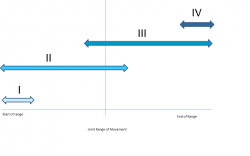Maitland's Mobilisations
Original Editors - Scott Buxton
Top Contributors -Scott Buxton, Admin, Kim Jackson, Mariam Hashem, 127.0.0.1, Tony Lowe, WikiSysop, Lucinda hampton, Kai A. Sigel, Ilona Malkauskaite, Jacob Bischoff, Neil Tuttle, Rachael Lowe, Evan Thomas and Oyemi Sillo
What is Manual Therapy?[edit | edit source]
Manual therapy can be broadly defined as "the use of hands in a curative and healing manner or a hands-on technique with therapeutic intent"[1]. There is a wide range of disciplines which use manual therapeutic methods to treat and manage pathology and dysfunction as a primary treatment method or in conjunction with other treatments. Physiotherapists are sometimes considered specialists in manual therapy but other professions such as Osteopaths, Chiropractors and Nurses employ manual therapy in treatment. Manual therapy works through a multitude of different mechanisms to be effective and understanding the physiological, neurological and psychophysiological mechanisms is critical to utilising manual therapy clinically in a competent and safe manner[1].
From a Physiotherapy perspective manual therapy is an essential and commonly used treatment method for the management of tissue, joint and movement dysfunction. There are several different main stream approaches to manual therapy; arguably the most common form and simplistic form manual therapy used by physiotherapists are mobilisations, from the Maitland school of thought.
The Maitland Concept[edit | edit source]
Key Terms[edit | edit source]
- Accessory Movement - Accessory or joint play movements are joint movements which cannot be performed by the individual. These movements include roll, spin and slide which accompany physiological movements of a joint. The accessory movements are examined passively to assess range and symptom response in the open pack position of a joint. Understanding this idea of accessory movements and their dysfunction is essential to applying the Maitland concept clinically[2].
- Physiological Movement - The movements which can be achieved and performed actively by a person and can be analysed for quality and symptom response[2].
- Injuring Movement - Making the pain/symptoms 'come on' by moving the joint in a particular direction during the clinical assessment[2].
- Overpressure - Each joint has a passive range of movement which exceeds its available active range. To achieve this range a stretch is applied to the end of normal passive movement. This range nearly always has a degree of discomfort and assessment of dislocation or subluxation should be acquired during the subjective assessment[2].
Initial Assessment[edit | edit source]
As with any treatment decision a competent and effective assessment is crucial to any patient interaction. The Subjective Assessment is neccessary for determining whether or not mobilisations are suitable for this patient or if they are contraindicated by looking for red flags such as cancer, recent fracture, open wound or active bleeding and more[3].
The objective assessment is an area which the versatile nature of mobilisations becomes clear. Aditionally to being a treatment method they are available to the therapist to assess a patients joints and tissues by analysing their extensibility, pain reproduction, bony blocks or abnormal end feels.
Principles of Technique[edit | edit source]
Decisions Which Need to be Made[2][edit | edit source]
- The Direction - of the mobilisation needs to be clinically reasoned by the therapist and needs to be appropriate for the diagnosis made. Not all directions will be effective for any dysfunction.
- The Desired Effect - what effect of the mobilisation is the therapist wanting? Relieve pain or stretch stiffness?
- The Starting Position - of the patient and the therapist to make the treatment effective and comfortable. This also involves thnking about how the forces from the therapists hands will be placed to have a localized effect.
- The Method of Application - The position, range, amplitude, rhythm and duration of the technique.
- The Expected Reponse - Should the patient be pain-free, have an increased range or have reduced soreness?
- How Might the Technique be Progressed - Duration, frequency or rhythm?
How to Choose the Direction[edit | edit source]
To make sure you settle on appropriate mobilisations it is important to get the type of glide, the direction and speed correct.
==== Different Types of Mobilisation: How Many Glides? ==== Each joint has a different movement arc in a different directon to other joints and therefore care needs to be taken when choosing which direction to manipulate; this is where the Concave Convex Rule comes into use, but for now consider the number of possible glides a clinician may use:
- A-P (Anteroposterior)
- P-A (Posteroanterior)
- Longitudinal Caudad
- Longitudinal Cephalad
- Joint Distraction
Concave Convex Rule: Up, down, Left or Right?[edit | edit source]
Choosing the direction of the mobilisation is integral to ensuring you are having the desired clinical outcome.
How to Choose the Grade: Quickly or Slowly?[edit | edit source]
References[edit | edit source]
- ↑ 1.0 1.1 Lederman E. The Science and Practice of Manual therapy. 2nd ed. Elsevier: London. (2005)
- ↑ 2.0 2.1 2.2 2.3 2.4 Hengeveld E, Banks K.(ed) Maitland's Peripheral Manipulation. 4th ed. Elsevier: London.(2005)
- ↑ Ferguson F, Holdsworth L, Rafferty D. Low back pain and physiotherapy use of red flags: the evidence from Scotland. Physiotherapy (2010:96,4;282-288 DOI: 10.1016/j.physio.2010.01.001)







